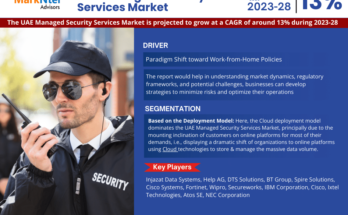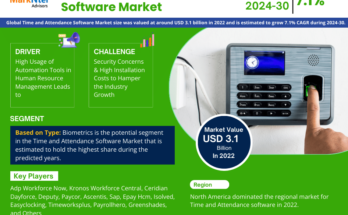The global asset management software market is anticipated to grow from USD 300.65 billion in 2021 to USD 2,655. 15 Billion in 2032. Asset management software has become an essential tool for organizations of all sizes and industries to manage and track their physical and digital assets. The increasing need for cost-effective asset management solutions, the growing demand for cloud-based asset management software, and the rising adoption of asset tracking technologies are among the key drivers of market growth. Asset management software can help organizations reduce costs, improve asset utilization, and increase operational efficiency, which is driving its adoption across various industries. Cloud-based asset management software is gaining popularity due to its flexibility, scalability, and accessibility from anywhere with an internet connection. This type of software can help organizations eliminate the need for expensive on premise hardware and infrastructure, and provide real-time access to asset information from anywhere, on any device. The healthcare industry is one of the largest users of asset management software, with hospitals and clinics using it to manage their medical equipment and supplies. The manufacturing industry also heavily relies on asset management software to track and manage their production equipment, tools, and inventory. Asset management software can also help organizations comply with regulatory requirements and industry standards, such as HIPAA, SOX, and ISO. It can provide audit trails, automated reporting, and other features to ensure compliance and reduce the risk of penalties and fines.
The need for cost-effective asset management solutions is a driving factor of the asset management software market due to the increasing pressure on organizations to manage their assets efficiently and effectively. With the rising costs of maintaining and managing physical and digital assets, organizations are looking for solutions that can help them reduce costs while improving asset utilization and operational efficiency. Asset management software can help organizations achieve these goals by providing a centralized database of assets, real-time tracking and monitoring, maintenance scheduling, and reporting capabilities. This type of software can help organizations streamline their asset management processes, reduce manual work, and eliminate errors and inconsistencies. Furthermore, the adoption of cloud-based asset management software is also driving the market, as it provides organizations with the flexibility, scalability, and accessibility they need to manage their assets from anywhere, on any device. Cloud-based software eliminates the need for expensive on-premise hardware and infrastructure, making it a cost-effective solution for organizations of all sizes.
Segmentation:
By Deployment Type:
• Cloud
• On-Premise
• Maintenance Management
• Inventory Tracking
• Asset Tracking
• Others
• Healthcare Compliance and Regulatory Reporting
• Manufacturing Production Tracking and Control
• Others
Geography:
North America dominates the asset management software market, accounting for the largest share of the market. This can be attributed to several factors, including: Early adoption of technology: North America has a history of early adoption of technology, including asset management software. Many organizations in North America have been using asset management software for several years, giving them a competitive advantage over organizations in other regions. Strong technology infrastructure: North America has a strong technology infrastructure, including high-speed internet connectivity, advanced cloud computing services, and reliable data centers. This infrastructure enables organizations to leverage cloud-based asset management software and benefit from real-time access to asset information from anywhere, on any device. Regulatory compliance requirements: North American organizations are subject to strict regulatory compliance requirements, such as HIPAA and SOX. Asset management software can help organizations comply with these regulations by providing audit trails, automated reporting, and other features.
Impact of COVID-19 on the global Asset Management Software Market:
Increased demand for remote asset management: With many organizations shifting to remote work due to the pandemic, there has been an increased demand for asset management software that can be accessed and managed remotely. Cloud-based asset management software has become increasingly popular, as it allows organizations to access and manage their assets from anywhere, on any device. Increased focus on cost-saving: The pandemic has resulted in many organizations facing financial challenges, leading them to focus on cost-saving measures. Asset management software can help organizations reduce costs by improving asset utilization and maintenance scheduling, minimizing downtime, and reducing the need for manual work. Increased need for asset tracking and monitoring: The pandemic has highlighted the importance of asset tracking and monitoring, especially for organizations that need to maintain social distancing guidelines or manage remote assets. Asset management software can provide real-time tracking and monitoring of assets, allowing organizations to optimize asset usage and improve operational efficiency.
Disruption to supply chains: The conflict could disrupt supply chains, particularly for hardware assets such as servers and storage devices. This could lead to delays in the delivery of asset management software or increased costs for organizations that need to replace or upgrade their hardware. Economic instability: The conflict could lead to economic instability in the region, which could affect the ability of organizations to invest in asset management software. Organizations may prioritize other areas of their business, such as security or risk management, over asset management software. Geopolitical uncertainty: The conflict could create geopolitical uncertainty, which could make organizations hesitant to invest in technology solutions from the region. This could lead to increased demand for asset management software from other regions, such as North America or Europe.
• Accruent
• AVEVA Group
• CA Technologies
• Dude Solutions
• eMaint
• IBM Corporation
• Infor
• IFS AB
• Maintenance Connection
• Microsoft Corporation
• Oracle Corporation
• Real Asset Management
• SAP SE
• Schneider Electric
• Trimble.




